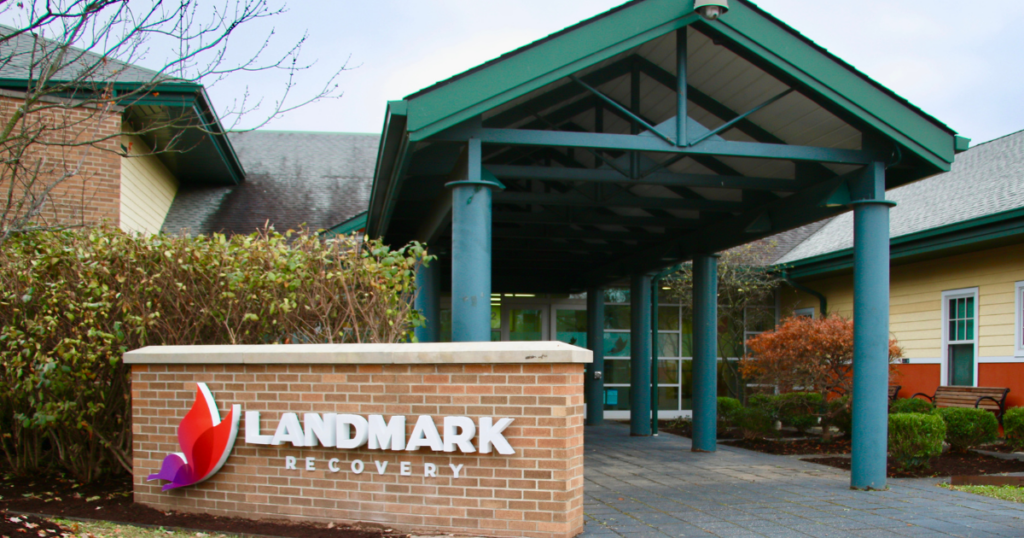Key points in this blog:
- Precipitated withdrawal is a sudden, severe reaction sometimes triggered when opioid-dependent (addicted) people try to quit.
- Symptoms include intense physical issues like sweating, shaking, nausea, vomiting, and mental effects such as anxiety.
- It’s quicker and more intense than standard withdrawal, often occurring within minutes to hours after quitting.
- Medical professionals use specific medications and strategies to manage this challenging situation.
- Understanding precipitated withdrawal is essential in addiction recovery, which treatment centers aim to provide.
Precipitated withdrawal is when opioid withdrawal symptoms start suddenly after taking buprenorphine, according to a study published online in the Journal of Substance Abuse Treatment. It’s a concern for addiction treatment providers and patients seeking addiction recovery due to safety risks and disruptive symptoms. Patient safety and well-being are top priorities at Landmark Recovery and other addiction treatment centers.
Specialized protocols during medical detox and medication-assisted treatment (MAT) programs effectively address and manage precipitated withdrawal for a safe and successful recovery.
Call 888-448-0302 to speak to a Patient Navigator about withdrawal management and addiction treatment options.
What Happens During Precipitated Withdrawal?
During precipitated withdrawal, opioids like heroin, Oxycodone, and fentanyl can be rapidly displaced by medications such as buprenorphine, leading to a sudden decrease in their effects. This can cause intense withdrawal symptoms to emerge within as little as 30 minutes to a few hours. The effects of precipitated withdrawal often come on exponentially in the beginning. Seeking professional help at a detox center can provide support and guidance to manage precipitated withdrawal safely and comfortably.
The Role of Opioids
Opioids, including both illegal drugs like heroin and prescription medications like Hydrocodone, have a significant impact on precipitated withdrawal. These substances interact with the brain’s opioid receptors, relieving pain and creating euphoria (a “high”). However, regular use makes the brain dependent on opioids, leading to chemical dependence.
When another medication like buprenorphine is introduced, it displaces the opioids from the receptors, triggering physiological responses. This sudden displacement causes withdrawal symptoms to emerge rapidly, often within 30 minutes to a few hours. These symptoms include intense cravings, nausea and vomiting, and body aches.
Understanding Opioid Receptors
To fully understand precipitated withdrawal, it’s important to grasp the concept of opioid receptors. These receptors are proteins found on nerve cells in the brain and other body parts. When opioids like heroin or Oxycodone enter the body, they bind to these receptors, triggering biochemical reactions that relieve pain and induce relaxation and euphoria. The strength and type of reactions depend on the specific opioid and how tightly it attaches to the receptors.
Full-Agonist Opioids
Opioids can be categorized as full or partial agonists based on their effects on opioid receptors. Full-agonist opioids, such as heroin and morphine, tightly bind to the receptors, fully activating them to provide strong pain relief and a powerful euphoria. However, these opioids carry a high risk of addiction and overdose.
Partial-Agonist Opioids
Partial agonists like buprenorphine have a lower risk of addiction and overdose. They also bind to the opioid receptors but don’t fully activate them. Instead, they block the effects of full-agonist opioids, reducing cravings and withdrawal symptoms. This makes them crucial in medication-assisted treatment (MAT) for opioid addiction. However, if a partial agonist displaces a full agonist from the receptors too soon after its use, it can trigger precipitated withdrawal.
Specific Opioids and Their Effects
Each type of opioid affects people differently and for varying lengths of time. For example, heroin gives a fast, powerful high, but it doesn’t last very long. Methadone, however, lasts longer but doesn’t give the same rush.
Regardless of these differences, all opioids can lead to addiction. If replaced with a weaker treatment drug, the person can experience precipitated withdrawal.
Role of Medications Like Suboxone
Drugs like Suboxone, a combination of two drugs – buprenorphine and naloxone – are important for helping people overcome opioid addiction. Suboxone weakens opioid withdrawal symptoms and cravings, making recovery easier. However, these drugs must be taken on a schedule to avoid precipitated withdrawal.
Detailed Timeline from Administration to Symptom Onset
How quickly you might experience precipitated withdrawal can look like this: If a person takes buprenorphine, withdrawal symptoms can start as soon as one to two hours later. This happens because the powerful opioid is pushed out from the brain’s receptors. These symptoms can intensify in one to three hours and last hours or even days. But this timeline can change based on the specific opioid used and how dependent or addicted the person is.
Recognizing and Understanding Precipitated Withdrawal Symptoms
Recognizing precipitated withdrawal starts with knowing its signs, similar to standard opioid withdrawal but typically harsher and quicker. These physical and emotional symptoms can affect a person’s well-being and be life-threatening in severe cases.
Physical Symptoms
Precipitated withdrawal can make the body react in extreme ways. You or your loved one might experience the following:
- Sweating
- Shaking
- Nausea and vomiting
- Diarrhea
- Muscle pain
- Fever
In severe cases, people might experience:
- Rapid heartbeat
- High blood pressure
- Bigger (dilated) pupils
Call a doctor or healthcare provider immediately if these symptoms happen.
Psychological Symptoms
Emotional signs and changes can lead to feelings of:
- Restlessness
- Anxiety
- Getting upset easily
- Sleep problems
- Mood swings
- Depression
- Hallucinations
These symptoms show why professional help is important, especially during detox.
Regular Withdrawal Vs. Precipitated Withdrawal: What’s the Difference?
Both regular and precipitated withdrawal have physical and emotional symptoms, but they start at different times and can have varying intensity levels.
Regular Withdrawal
Regular withdrawal is a slower process that starts when the opioid’s effects end, usually six to 12 hours after a person’s last dose.
Precipitated Withdrawal
Precipitated withdrawal can start quickly – within minutes to hours – after taking a drug like buprenorphine, and the symptoms are usually worse.
Management and Treatment
Treating precipitated withdrawal means lessening withdrawal symptoms and giving emotional support. This treatment includes using medication to improve discomfort and keeping a close eye on the person to ensure safety.
Role of Medications
Medications like clonidine can help manage the bad symptoms of precipitated withdrawal. Sometimes, a doctor may change the dosage of buprenorphine or wait to give it to lessen the effects of precipitated withdrawal.
Role of Healthcare Providers
Healthcare providers, including us here at Landmark Recovery, play a big part in managing precipitated withdrawal. They monitor patients’ vitals, prescribe medication, and provide emotional support.
The Risk of Precipitated Withdrawal in Medication-Assisted Treatment (MAT)
While MAT is a good way to manage opioid addiction, there’s a risk of precipitated withdrawal if medications aren’t taken right. Patients must stick to their medication schedule and talk openly with their healthcare provider to keep this risk low.
Preventing Precipitated Withdrawal
Stopping precipitated withdrawal from happening includes teaching patients about it, timing medication correctly, and having medical professionals observe. Regular communication between the patient and the healthcare provider can lower the risk. This is why it’s important to undergo this kind of treatment under the guidance of a medical professional or in a rehab environment.
The Importance of Timing and Adherence to Schedule
Taking medication at the right time and sticking to the schedule is important in MAT to avoid precipitated withdrawal. Patients must understand that taking medication too soon after using opioids can lead to severe withdrawal symptoms.
Landmark Recovery’s Approach to Managing Precipitated Withdrawal

Landmark Recovery of Louisville, voted Newsweek’s best addiction treatment center in Kentucky two years in a row (2021 and 2022)
At Landmark Recovery, we focus on the patient to manage precipitated withdrawal. Our expert medical team works closely with patients to:
- Monitor withdrawal symptoms 24/7
- Change medication doses if needed
- Provide emotional support and encouragement
We believe in giving our patients the knowledge and tools they need for a successful recovery journey.
Recovery is a Phone Call Away
If you or a loved one are dealing with opioid addiction, contact Landmark Recovery. Call our private admissions line at 888-448-0302, available 24/7/365. We’re here to help you on your path to recovery.
Looking for More Resources?
Read these related blogs:
- What Happens When You Mix Suboxone and Methadone?
- Healthy Foods to Eat During Drug or Alcohol Detox
- Why Quitting Drinking, Drugs, or Opioids Cold Turkey is Dangerous
- Understanding Detox: What is Medically Supervised Withdrawal?
- The Dangers of Cocaine Withdrawal
- What is DTs in Alcohol Withdrawal?

Choose Recovery Over Addiction
We're here 24/7 to help you get the care you need to live life on your terms, without drugs or alcohol. Talk to our recovery specialists today and learn about our integrated treatment programs.





